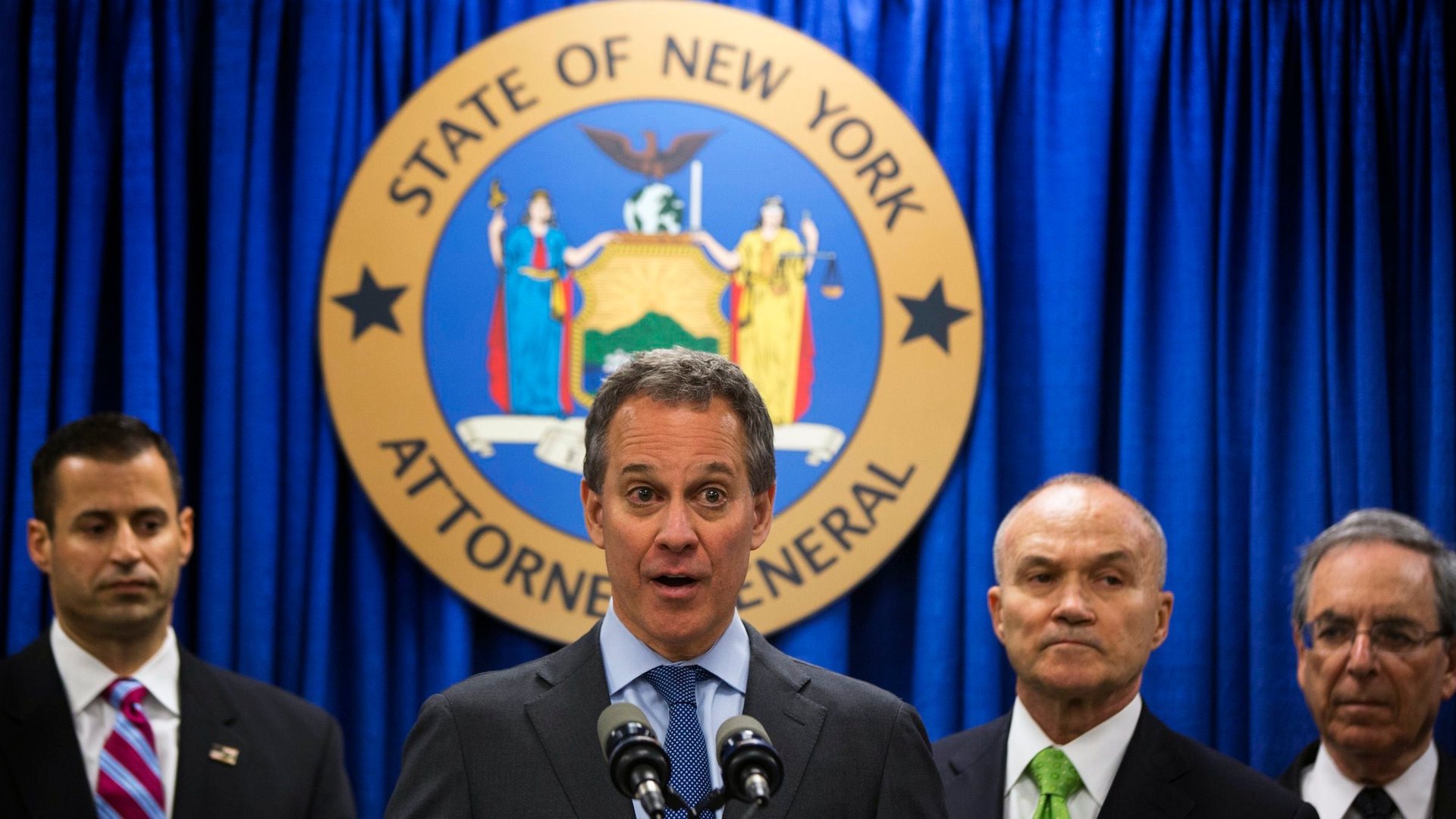Eric Schneiderman is probing high-frequency traders but he shouldn’t stop there
New York attorney general Eric Schneiderman is turning up the heat on on high frequency traders (HFTs). He announced an inquiry yesterday into the benefits that exchanges like the NYSE and Nasdaq offer HFT firms for a fee, such as “co-locating” their servers in the exchanges’ own data centers to give them a few milliseconds of edge.


New York attorney general Eric Schneiderman is turning up the heat on on high frequency traders (HFTs). He announced an inquiry yesterday into the benefits that exchanges like the NYSE and Nasdaq offer HFT firms for a fee, such as “co-locating” their servers in the exchanges’ own data centers to give them a few milliseconds of edge.
The rationale for cracking down on such practices is to eliminate unfair advantages the HFTs have over other participants in the market. But Schneiderman might also do well to look at another source of market distortion: The rebates that exchanges offer broker-dealers (including, but not only, HFTs) to do business with them directly.
The rebates are known as “maker-taker.” An exchange offers a broker-dealer (the “maker”) a payment—roughly 30 cents per block of 100 shares sold, or “30 mils” in exchange parlance—to sell shares, or “make” liquidity, on that exchange, and charges a slightly smaller fee to “takers” who buy securities. Traders don’t typically pass these rebates on to customers. Here’s a Bloomberg story that discusses some of the trader talk around the rebate system.
Critics of the maker-taker rebates say they make broker-dealers or HFTs seek out rebates rather than executing orders for their clients at the best possible price. But there’s a deeper concern: The rebates might exacerbate the severity of flash crashes, the sudden market collapses that are typically blamed on HFTs. Jeff Sprecher, CEO of the IntercontinentalExchange, which now owns NYSE, outlined this worry to Reuters a few months ago:
“I think maker-taker pricing or payment for order flow is bad for markets,” Sprecher said. “It creates false liquidity by attracting people who are there solely to try to make rebates and not actually trade and hold risk. That liquidity leaves quickly and is not subject to any contractual obligation like a market-maker would be.”
In other words, Sprecher thinks broker-dealers doing a lot of business with an exchange just for the rebates might disappear during the next the flash crash. Without genuine liquidity providers, it will be harder for trades to get done, making a rocky market harder to stabilize.
So why are exchanges offering these rebates? The root cause is an increasingly fragmented market. Maker-taker rebates began to emerge in the late 1990s as upstart exchanges sought to lure broker business from bigger ones like NYSE and Nasdaq, and have proliferated along with the growing number of exchanges and dark pools (private trading platforms). Sprecher offered a fairly candid account of his own firm and rebates: ”The pricing structure that has been created by exchanges, including my exchange, has really had a corrosive impact on cash trading in U.S. equities in particular,” he told Reuters.
The Wall Street Journal reported (paywall) yesterday that regulators at the Commodity Futures Trading Commission are looking into the rebates exchanges offer to clients. And one of the first HFTs set to go public, Virtu Financial, disclosed in its IPO papers that regulators were looking into rebate practices.
Of course, at least one reason Sprecher spoke out against rebates is that they’ve caused exchanges like his to lose business to smaller ones. But that doesn’t take away from questions about whether investors are getting the best prices on their trades, and whether the rebates are contributing to market instability. The Securities and Exchange Commission has started reviewing the rebates practice. Maybe Schneiderman should follow suit.